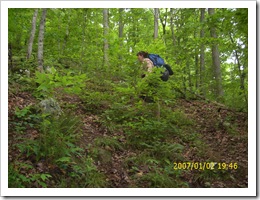Blog Archives
Alive in Wild Plant Dialogue
Between us the world wakes and stretches into communication channels of light energy.
Virtual libraries broadcast through our DNA to “other” DNA , and back. Feedback loops spiral under our feet as we walk through the meadow. Plants are surrounded by an invisible cloud of volatile oils – these, too, speak to us, telling us whether we’re a biochemical match. The brain monitors our internal state and knows exactly what we need, is on the look out for it. Identifies allies when breathing in their phytochemical “tag cloud”.By developing both our senses and receptivity we connect with the plant medicine needed for our health. This is part of the foundation for the “direct knowing” our ancestors described as the source of their vast database of complex botanical expertise. “The plant told me what it was good for.”
The brain translates, perhaps an image, a song, an attraction pops into our awareness. None of this happens without cultivation. We must cultivate the garden of our depths. To practice this tuning-in we develop rituals. The ritual of a daily sit spot, of mentally mapping our surroundings, of taking the initiative to open the dialogue with an offering to the “plant people”.
Since the communication channels are bi-directional, we must establish our intent towards the plants. We’ve learned how plants respond favorably to our speech, and our music. Through the work of Cleve Baxter , we’ve seen how plants respond to our feelings. They cringe at our pain, lean towards our joy. We draw them close with feelings of gratitude and visualizations of their welfare.
We develop respect. Noticing when we can harvest at both the plant’s phytochemical peak and how we can minimize the disruption. Now we are dancing the reciprocal jig of our grandmothers. Now we drilling into the secret of reliable herbal medicine making.
To begin, simply meditate with a plant. It can even be a plant potted near the window. Best to pick a stranger. Establish feelings of gratitude, love, kindness.
In one of Tom Brown’s winter wilderness classes he had each of his students take corn and separate it into three piles. At one pile they were to work themselves into anger. At another pile, feelings of indifference. At the third, feelings of love. Then they were to leave the corn piles sitting on the snow. On their return, the pile of anger corn was left untouched. The pile of indifference corn was picked at. The pile of love corn was gone. In each case, the animals had selected from love. Plants are the same.
Later, gently explore the plant with your senses. Touch, smell, sight (draw it), and following the guidelines for safe taste testing sample a tiny piece (don’t swallow if you don’t know what it is…be careful to learn the tasting rules first).
Either before or after the above step, sing and even dance to the plant. Give it something. Only then, ask for something in return. Its gift may come while you sleep, or an unusual image could come any time of day. Notice and journal it.
Pay attention to feelings of “attraction” as you walk. You may be marching along when suddenly you get a feeling to stop and look…or to go in another direction. Don’t ignore those nudges. Show your receptivity by acting on them. You may be taken to a plant meant just for you, or one you’ve been wanting to find. This has happened to me many times.
Practice going to sit in a new spot and just notice which plant attracts your attention, stands out.Then learn about that plant. First comes development of this sensitivity and dialogue…then come the plant ID books. Your effort will allow you to become alive in plant dialogue and ensure the quality of your work as a healer.
Here’s a good video demonstrating how plants respond to our intentions:
